
In the last few weeks, we are hearing about more and more cities returning to remote learning. Positive cases continue to rise and the cold weather is making outdoor social distancing difficult. Children are again spending more time at home, apart from their friends, and outside of the supportive therapeutic-educational framework they are used to.
As occupational therapists at The School for Special Education at Beit Issie Shapiro, aside from the regular one-on-one therapy we give our students to work on specific skills, we also spend a lot of time in the classroom working on social skills, social play, and active participation. Many of our students have complex physical, cognitive, and communication difficulties, but we encourage and support them to be as active as possible in learning and daily activities to the best of their abilities. One of our biggest concerns with the move to remote learning is a regression to passivity and isolation. To address this issue, we came up with a few tips and ideas to help families and students maintain social connections and to encourage participation at home.
Playing at Home
Sending tips and tricks home
At school, we teach our students how to play a range of popular games; card games, apps, and schoolyard games. We provide physical adaptations when needed and even adapt the rules to their abilities. We used to spend a lot of time creating adapted games, but we now emphasize playing regular games that other children play and that can be found in any store, in order to make integration easier. During the first school closure, we created activity cards with game suggestions for parents, based on what we had been playing in school. We included photos of the games and ideas for adaptations that they can easily recreate at home.
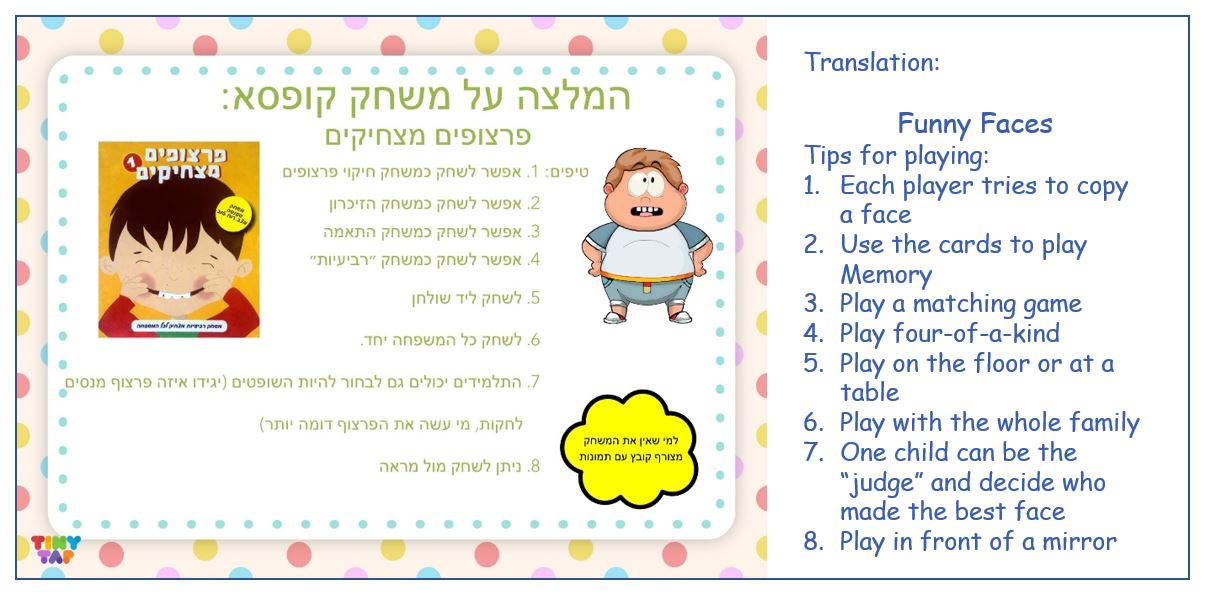
An example of a play activity card complete with suggestions for different ways to play
And of course, we always remind parents of the importance of communication during play. Along with activity card suggestions, we sent communication boards to go along with the games we suggested, so parents would have access to the specific language supports that both verbal and non-verbal children might need to play. We sent these communication boards as photo screenshots so they could be easily printed at home or used on any device. Here is a simple example:
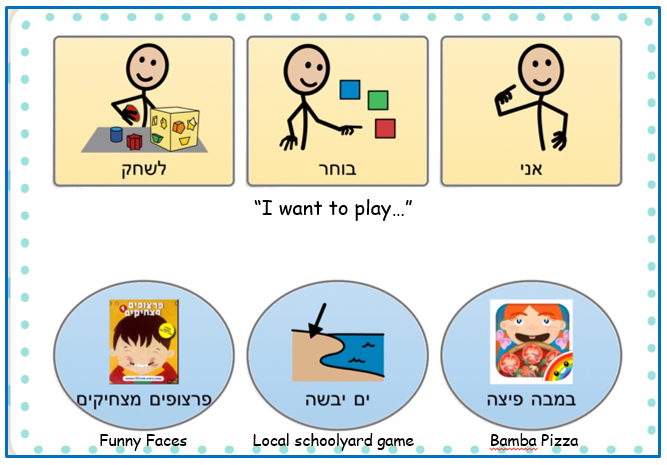
Sample of a communication board sent home with activity ideas
Ideas for quick adaptations
At school, we have plenty of assistive devices to help adapt games but we quickly realized that parents don’t have access to these devices at home. With everyone being in lockdown, we realized they needed some ideas for adaptations that could be easily made at home. Here is a how-to video we made of homemade cardholders. The video is in Hebrew, but the ideas are clear.
Spending time with Friends while Apart
Just as important as playing at home is figuring out how to play with friends when you aren’t able to see them. There are many online platforms and video games for kids to play, but for children with significant disabilities, these options can be inaccessible.
Videos for parents
Once we figured out some ways to play the students’ favorite games on Zoom, we created videos for parents explaining how to do it.
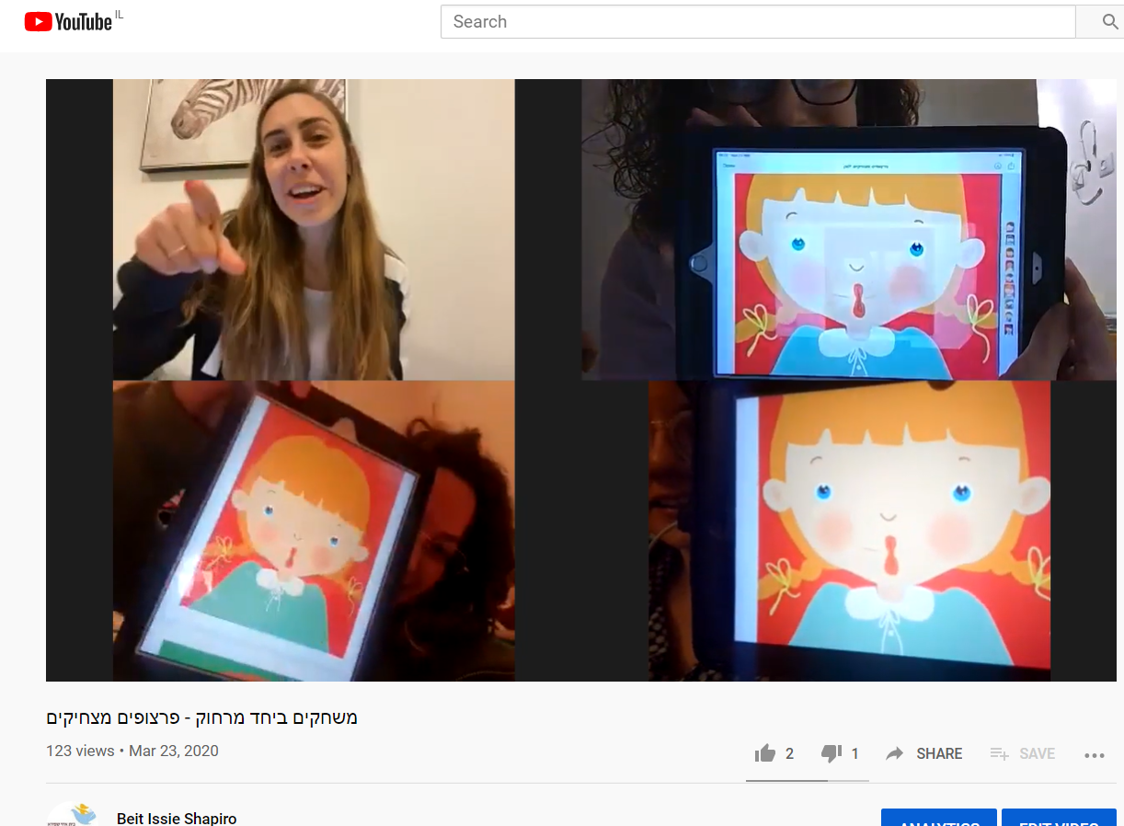
A screenshot of the video the OTs created to play our favorite card game on Zoom
Simple and successful ideas for playing games on Zoom
In the photo above we are explaining to families how to play this card game through video chat with friends. Our students love this game. According to the rules, it’s a game of four-of-a-kind, but we love to adapt rules! In this game, Funny Faces, by Neta Siloni Games, the cards have cute drawings of … funny faces. Students love the cards so much that we find many different ways to play with them. Here we took photos of the cards and added them to a wheel on the Wheel of Names website, and we took turns making funny faces together. So many laughs between friends!
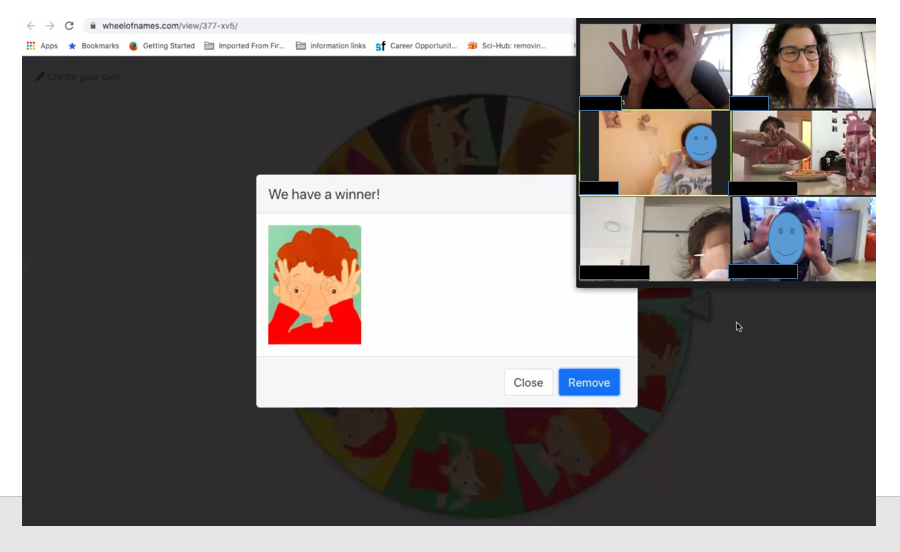
Playing Funny Faces on Zoom using Wheel of Names
Other games that work well and are easy to put together are Bingo and scavenger hunts. Many of our students use assistive communication apps, so we used them to easily create grids for bingo and scavenger hunt games. Once you have the boards ready you can easily send screenshots home to parents and then meet up on Zoom to play.
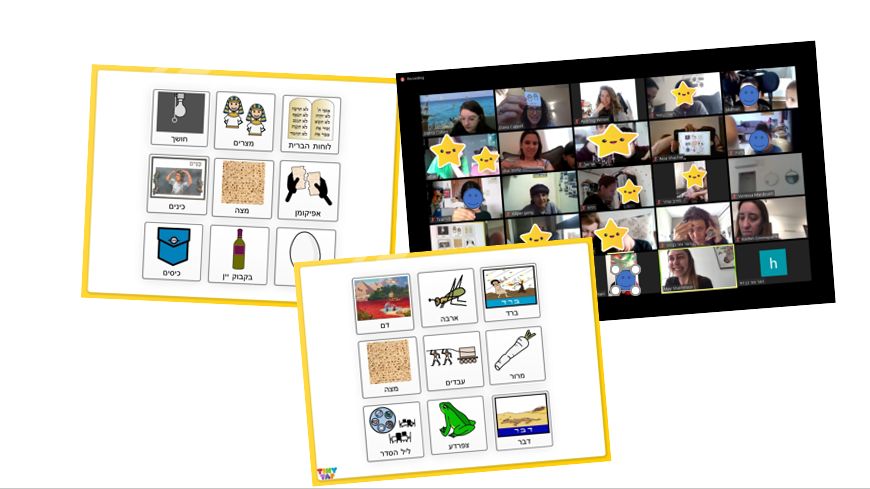
Samples of our bingo boards and playing on zoom with friends from school
We also had great success with simple ‘I Spy” games using the Annotate and Remote Control features on Zoom. We created a collection of photos that we would screenshare and the students would take turns locating the items. There are many “I Spy” type worksheets available online, but we love to use photos. In this particular activity, we were learning about different cities around the country and used images in Google Maps.
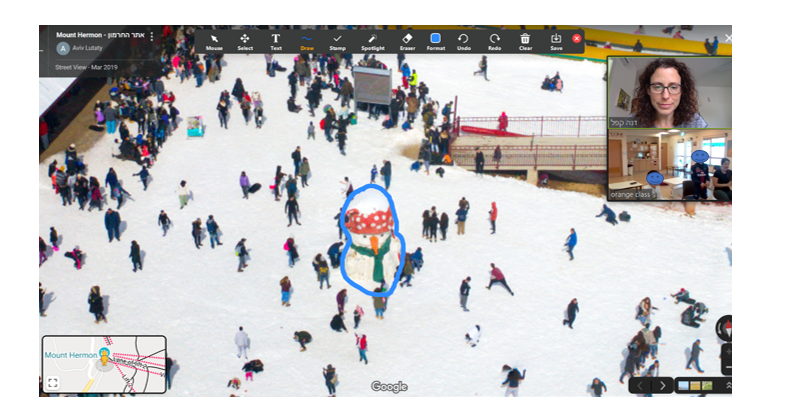
Playing “I Spy” on Zoom using photos in Google Maps
Schedule a meal together
At our school, students eat two meals a day together. No matter how much help they need to eat, mealtime is still a very social experience at school and it was an event we wanted to try to recreate from home, so we scheduled Zoom meals. Whoever could join, did, and the students had a great time. Even though we have now returned to school, there are frequent instances where a class or a few students are home in isolation and we have realized that eating meals together (through Zoom) helps to make the distance smaller.
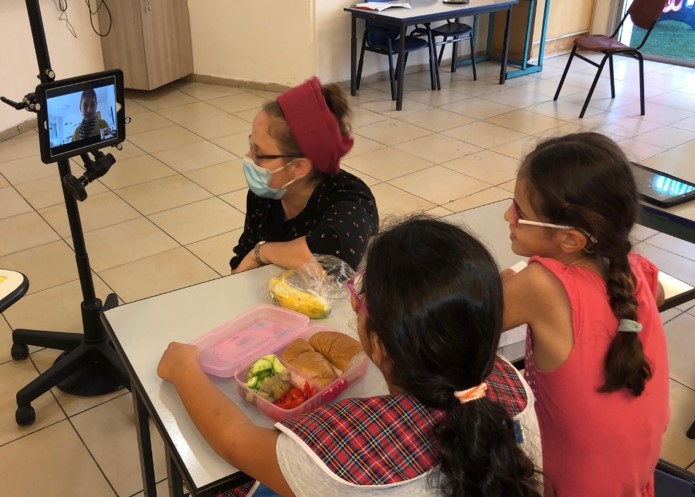
Students eating lunch together, with one friend joining on Zoom.
Participating at Home
Aside from play, as OTs we wanted to make sure that our students were continuing to be active in their environment. We value the ability of the students to voice their opinions, choose things for themselves, and to be active in daily routines. At school, they get a lot of support to accomplish this and it was important for us to support families to integrate this as well.
Videos for parents
Here, again, videos were a great solution. we filmed a variety of videos about taking part at home, helping to make meals, set the table, and choose clothing to wear. In return, we received photos and videos of our students doing everything from sorting laundry to putting the dishes in the sink. It may sound obvious, but as we know, sometimes it is easier to do things ourselves as parents/adults forgetting how important it is for the child’s sense of self to be an active part of the home environment.
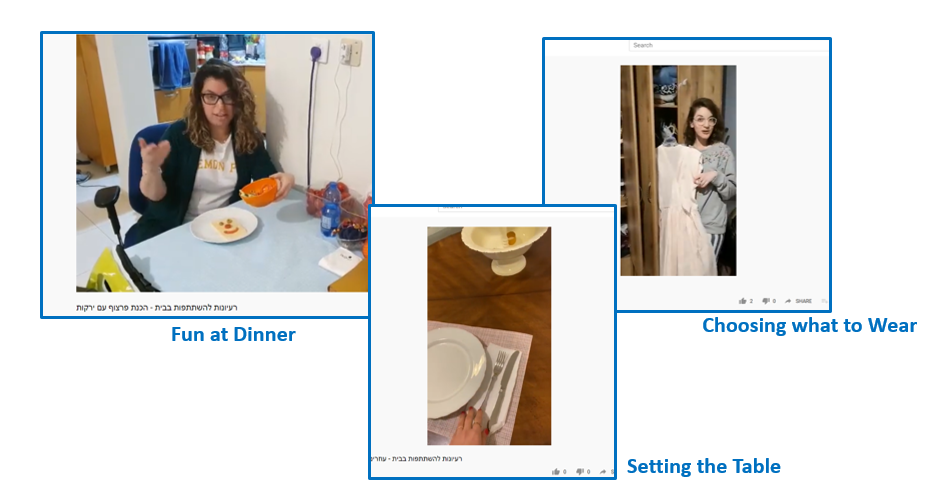
Samples of videos sent home to families about helping around the house
I hope you’ve found an idea or two for your students. We’d love to hear about what you’re doing as well!
Happy New Year, and stay safe!



While remote learning is less prevalent now, I still love the ideas! Thanks a lot 🙂